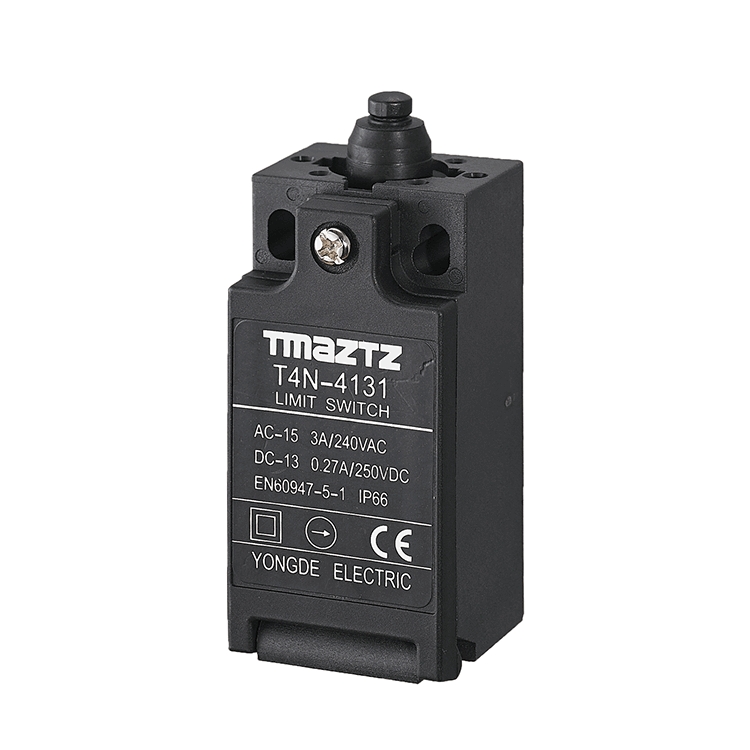Jun. 09, 2023
Electrical Equipment & Supplies
Small limit switches are essential components in numerous industries, enabling precise control and automation. These compact devices are designed to detect the presence or absence of an object, providing a signal that initiates specific actions in control systems. Understanding how a small limit switch works is fundamental to harnessing its capabilities and incorporating it effectively into various applications. In this article, we will explore the inner workings of a small limit switch, its components, and its applications.

At its core, a small limit switch operates on a simple yet ingenious principle. It consists of three primary components: an actuator, contacts, and a mechanical assembly. The actuator, which can be a lever, roller, or plunger, is the part of the switch that comes into contact with the object being detected. When the actuator encounters an object or reaches a specific position, it triggers the switch's mechanical assembly, causing the contacts to change their state.
The contacts in a small limit switch can be of two types: normally open (NO) or normally closed (NC). In the default or resting state, the contacts are in their respective positions—either open or closed—based on the switch configuration. When the actuator is triggered, it causes the mechanical assembly to move, thereby changing the state of the contacts. For instance, a normally open switch will close its contacts when actuated, completing the electrical circuit, while a normally closed switch will open its contacts, interrupting the current flow.
The change in contact state in a small limit switch is significant as it provides an electrical signal to the control system, which can then respond accordingly. This signal can be used to start or stop a motor, activate an alarm, initiate a safety mechanism, or trigger any desired action based on the specific application requirements. Small limit switches are commonly used in various industrial settings, such as conveyor systems, assembly lines, elevators, and packaging machinery.
The versatility of small limit switches lies in their ability to be customized and adapted to specific application needs. These switches often come with adjustable actuators, allowing for precise positioning and sensitivity. By adjusting the actuator position or its operating force, the switch's response can be fine-tuned to ensure accurate detection. Additionally, small limit switches can be combined with other components such as relays, timers, or programmable logic controllers (PLCs) to enhance their functionality and expand their application possibilities.
The robust construction of small limit switches enables them to withstand demanding environments. They are built to endure mechanical stress, temperature variations, vibration, and even exposure to moisture and dust. Depending on the application requirements, small limit switches can be made from various materials such as stainless steel, thermoplastics, or rugged metal alloys. Some switches are also designed to be explosion-proof, ensuring safe operation in hazardous environments such as oil refineries or chemical plants.
Furthermore, small limit switches can incorporate additional features to enhance their reliability and performance. For instance, some switches are equipped with self-cleaning contacts to prevent the accumulation of debris and maintain consistent operation. Others may have sealing or gasketing to provide protection against water, oil, or other contaminants. These features contribute to the longevity and durability of the switch in challenging industrial settings.
In summary, small limit switches are compact yet powerful devices that play a crucial role in control and automation systems. By sensing the presence or absence of objects, they provide electrical signals that initiate specific actions in the control system. With their versatile design, adjustable actuators, and robust construction, small limit switches find applications in diverse industries, enabling precise control, enhancing safety, and optimizing efficiency. Understanding the inner workings of these switches empowers engineers and technicians to make informed decisions and harness their capabilities effectively in their respective fields.
Previous: How do medical LCD screens differ from regular LCD screens?
Next: Advantages and disadvantages of Liquid Tight Flexible Metal Conduit?
If you are interested in sending in a Guest Blogger Submission,welcome to write for us!
All Comments ( 0 )